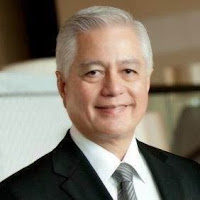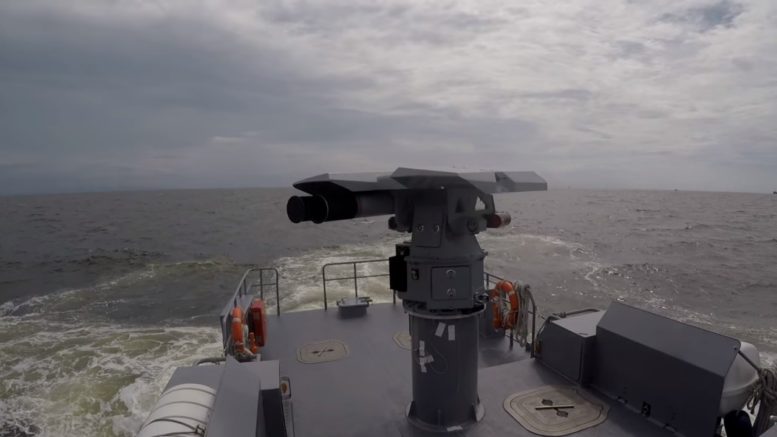As far back as 1991, I was vocal about investing in our defense, should the government decide to let go of the U.S. bases on account of a provision in the 1987 constitution mandating “no foreign troops on Philippine soil.” Up to that point, the U.S. was our defense shield, and if we were to give it up then we would have to be responsible for the country’s defense.
Well, one can say that due to intervening economic, financial and political crises stemming from internal and external factors that rocked the country from 1989-2012, the government was unable to invest in defense. We lost Mischief Reef to China in 1995; lost tens of billions of dollars to international poachers in our EEZ; lost our coral reefs to illegal fishing practices; lost our reefs and shoals now occupied by China that reclaimed them to build military forward operating bases.
In short, on account of our failure to invest in national security, our borders are porous and enable terrorists and criminals to ingress and egress at will; our sovereign rights in our EEZ have been compromised; we have limited control over our maritime domain; and we lack the means to back diplomacy with credible deterrence or enforcement. We behaved mindlessly for a long time like a rich bank without a security fence.There were times though when we attempted to improve our defense posture. After Mischief Reef was stolen from us, then President Fidel V. Ramos caused the passage of the First AFP Modernization Act in 1995 where its core source of funds would be from the privatization of Fort Bonifacio. Its implementation was impeded by the 1997 Asian financial crisis that took several years to overcome. By that time, it was President Joseph E. Estrada’s turn to continue where FVR left off but then he was ousted 2.5 years after he took office. Not much happened during then President GMA’s time again because of a global financial crisis that hit in 2007, and within the first two years of the PNoy presidency. However, after China occupied Scarborough Shoal in 2012, government passed the Second AFP Modernization Act where Php70-billion was earmarked for our defense buildup.
The AFP thereupon drew up its procurement plan spanning 15 years split in three 5-year horizons. The first horizon was completed in 2017. The AFP is now in its second horizon and so far, President Duterte has approved almost Php300-billion, or four times more, than the first horizon in his first two years of office. In fact, some items that fall under the third horizon are being accelerated to the second. Read between the lines.
What’s significant also is the approval of two vital national security documents – the National Security Policy and National Security Strategy – that PRRD approved last year and this year, respectively, to guide our national security sector during his term in office. It sets the tone for our defense planners and legislators to rationalize their procurement based on specific strategic guidelines. Sources of funds to pay for the defense buildup have been identified to serve as the focal point for their deliberations.
No longer shall defense acquisitions be on the basis of unjustified wish lists, or driven by the budget or by suppliers. It will now be on the basis of what is or will be needed to adequately deter and defend our country based on a keen awareness of the current and future security environment. This brings us up to par with our security allies and partners who’ve applied this discipline long ago to rationalize their defense acquisitions and, more importantly, sustain their capital assets to maximize operational readiness and extend their life cycles to their fullest potentials. This is one area, however, that we still need to focus on.
That said, our sea-air buildup is crucial to deter or defend against external threats to our maritime domain and airspace. Submarines are critical to the equation as with a radar system that covers our entire EEZ; multi-role missile equipped frigates and corvettes; landing dock ships; unmanned air, surface and sub-surface combat vehicles; and multi-role helicopters. We’re lucky to have reliable suppliers in Israel, the U.S., South Korea and Indonesia, while Japan, Australia, France and Germany have been fully supportive of the Coast Guard’s build-up.
In the air, multi-role fighters to defend our airspace are crucial as with radar to detect hostile threats; ground attack and close support aircraft, manned and unmanned; and transports, rotary and fixed wing. All those are in the pipeline to include our land forces that are eyeing strategic land-based missile defense systems. South Korea has supplied us with 12 FA-50 fighter-trainers with ground attack capability. The U.S. and Japan have supplied us with aircraft for Intelligence, Surveillance and Reconnaissance. And we’re considering multi-role fighters from the U.S., Sweden and Russia to fill up two squadrons.
I’m partial toward mobile land-based long-range shore-to-ship and surface-to-air standoff missile systems that cover our EEZ and airspace 360 degrees. Missile systems from the U.S. (if we have access), Israel, Sweden, India and Russia are go-to supplier countries. They have what we need to provide strategic credible deterrence on land that could be complemented by naval platforms. The USA’s Tomahawk, India’s Brahmos, Sweden’s Rbs-15, Israel’s LORA, and Russia’s S-400 are good examples of that.
I look forward to a joint service command and control (C2) system from the U.S. that will provide information integration and dissemination to each of the AFP joint and service specific headquarters, greatly expanding their ability to form and maintain a national common operational picture. The system will provide command, control, communications, computers, intelligence, surveillance, target acquisition and reconnaissance capability. It will require a microwave communications backbone system with satellite communications capability.
Last but not least, we need to conduct a no-nonsense self-reliance program to build our own weapons and defense systems. National security is everyone’s responsibility and ideally carries no price tag. National unity is critical to its sustainment for a better Philippines for all Filipinos.
 About the author: Rafael M Alunan III, a member of the Maritime League, was Secretary of Tourism during the Cory Aquino administration, and DILG Secretary during the Ramos administration. A DLSU graduate, he was in the Naval Reserve but subsequently transferred to the Army reserve, where he now commands an Army Reserve Division. He is very active in government affairs as a private citizen with confidence building with China, government reform in the Philippines, National Security, and overall national development. Alunan is a member of many civic organizations and known to be an exemplar in his work while in government.
About the author: Rafael M Alunan III, a member of the Maritime League, was Secretary of Tourism during the Cory Aquino administration, and DILG Secretary during the Ramos administration. A DLSU graduate, he was in the Naval Reserve but subsequently transferred to the Army reserve, where he now commands an Army Reserve Division. He is very active in government affairs as a private citizen with confidence building with China, government reform in the Philippines, National Security, and overall national development. Alunan is a member of many civic organizations and known to be an exemplar in his work while in government.
